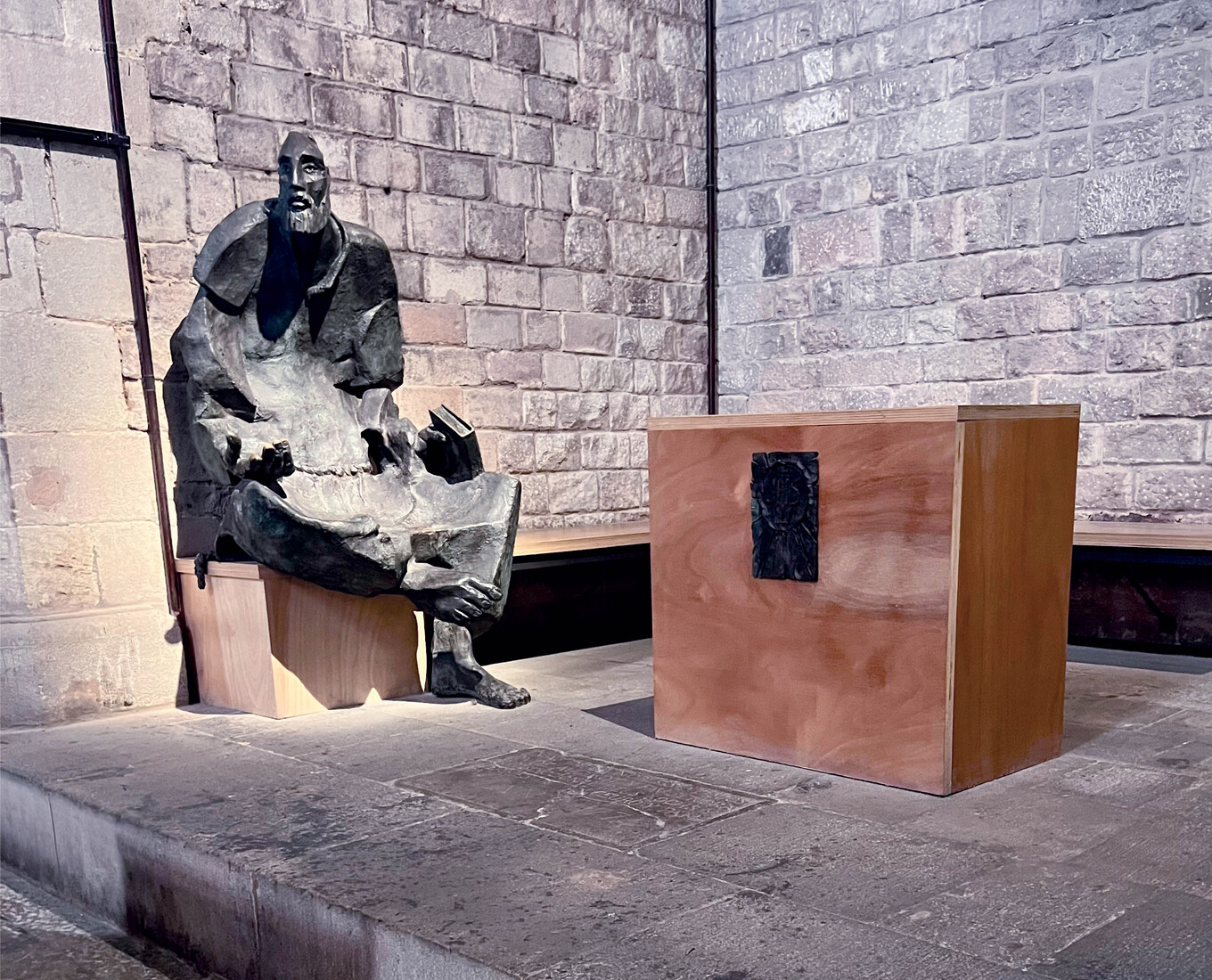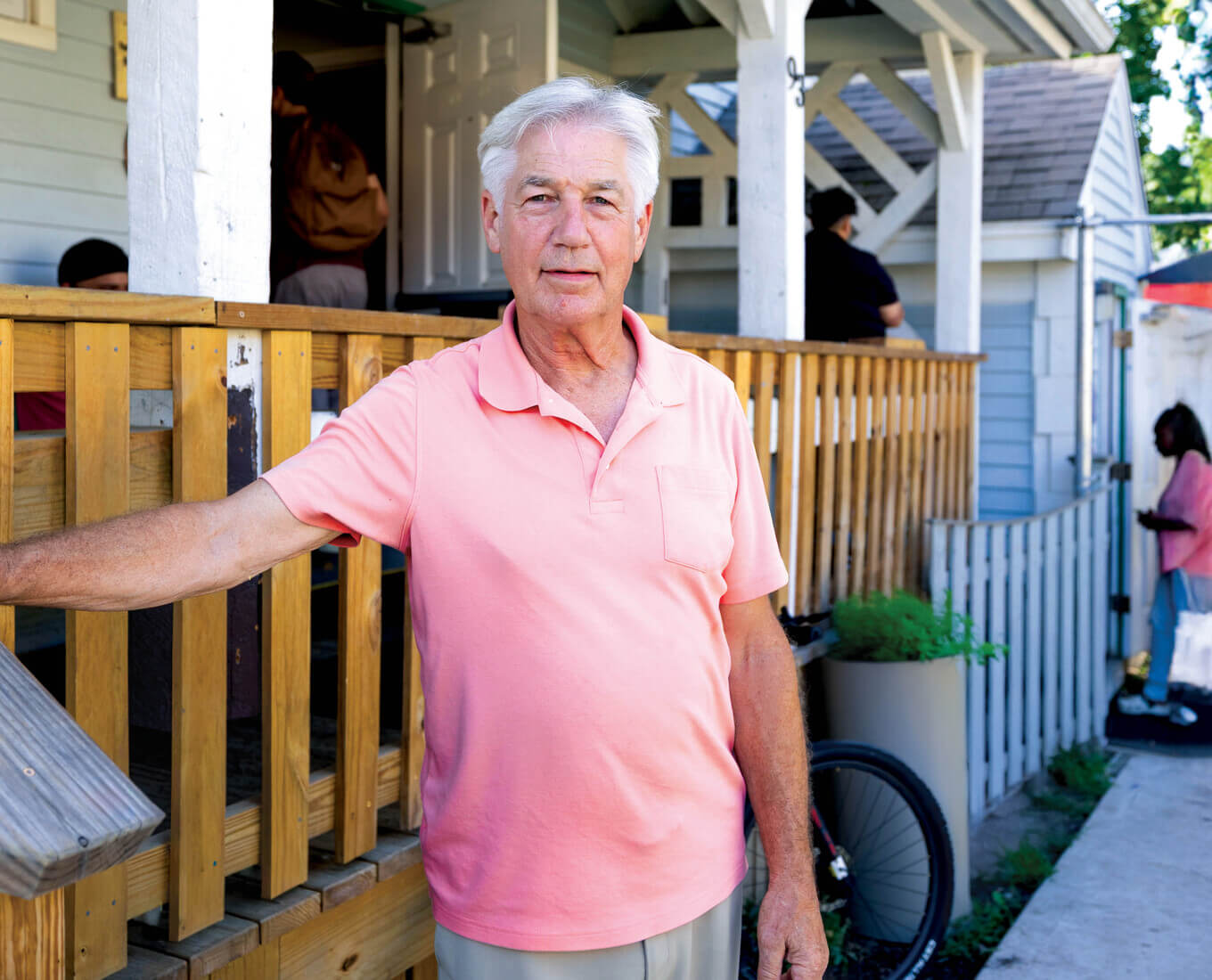News from across campus made headlines this year.
One of the big stories to come out of the gates of Mount St. James in 2005 was the College’s agreement for the construction of a new ballpark that heralded the return of baseball to the city after a 71-year absence. The partnership forged by Holy Cross, City Hall, and the Worcester Tornadoes team — who swung their way to a Can-Am League championship — attracted great interest from local and regional press.
On the eve of their win, one of three positive Telegram & Gazette editorials devoted to the Tornadoes, read "Worcester’s pro baseball team, hardly a dream a year ago, is winding down its first season with a record of success, on the field and off, that has exceeded the most optimistic expectations." Another read, "That the franchise holders were able to create a pro ball team from scratch in just a few months is ... a dramatic demonstration of what a wholehearted community effort can accomplish."
The College’s other extensive community involvement efforts also attracted attention. In October, city officials and neighborhood activists formally broke ground on a $2 million condominium project for the South Worcester neighborhood and supported by the College, expected to alleviate a housing crunch in the working class neighborhood. A Telegram & Gazette editorial lauded the efforts of President Michael C. McFarland, S.J., for increasing participation in the community. "Since Rev. McFarland became president in 2000, Holy Cross has quietly rejoined the city. Its impact has been especially noticeable in the South Worcester and College Hill neighborhoods."
The Tornadoes and community involvement efforts weren’t the only public relations homeruns. Hope and Healing: Painting in Italy in a Time of Plague, 1500-1800, a Worcester Art Museum exhibition organized and co-sponsored in part by Holy Cross, explored art’s role in envisioning hope and healing in an age marked by outbreaks of plague. Reviewers from The New York Times, Washington Post, Boston Globe, and many other publications praised the exhibition and the curators. The Wall Street Journal wrote, "What is most surprisingly evident . . . is how a seemingly arcane subject, breaking new scholarly ground, is demystified and made intensely engaging and accessible to museum visitors."
The College’s decision to make standardized test scores optional in admissions applications resulted in national coverage (Associated Press, New York Times, Boston Globe, Inside Higher Education) and comment. One college guidance counselor wrote in an op-ed column: "At some point, we all must take action. The College of the Holy Cross ... did just that this week by announcing that the SAT would no longer be required for admission. In doing so, they join a growing list of colleges that believe that there are better ways to assess whether students are prepared for college than the SAT."
The Chronicle of Higher Education noted that six Holy Cross students earned Fulbright Awards, one of the highest producers among bachelor’s institutions in the nation.
Reporters turned to Holy Cross faculty for insight into news of the day. Most notably, religious studies professors and experts at the Center for Religion, Ethics and Culture were called upon to offer their perspectives on the passing of Pope John Paul II and the ensuing changes in the Vatican. Fr. McFarland commented on Pope John Paul II’s legacy and on Catholicism on college campuses on "Hardball with Chris Matthews" in April.
Other faculty members made headlines with their research. Victor Matheson’s studies, which dispel the notion that mega-sporting events (such as the Super Bowl and Major League Baseball games) in towns equal large economic dividends have made him a widely-sought expert. In a New York Times op-ed, the assistant professor of economics offered solace to New Yorkers after the announcement that London, and not New York City, will be playing host to the 2012 Summer Olympics.
"A study of the 1996 Summer Olympics in Atlanta, which I conducted with Prof. Robert A. Baade of Lake Forest College in Illinois, found that the Games there generated as few as 3,500 new jobs, a tiny fraction of the 77,000 new jobs predicted by the local organizing committee in the run-up to the Olympics," Matheson reasoned.
Following the launch of Discovery in the summer, Matthew Koss, associate professor of physics who has participated in research experiments that flew on three shuttle flights, questioned NASA’s motives on ABC Radio, "Newsnight" on New England Cable News and in a Boston Globe op-ed. "For far too long, NASA has used the images of humans in space to sell the space program at the expense of more productive and less expensive autonomous-remote missions," Koss wrote. He also stated, "NASA has also eliminated its basic research portfolio in biological and physical science. This is a waste of human capital and infrastructure that NASA spent over 30 years building; it was producing normative science and was listed as a key reason to build a space station."
Leon Claessens, assistant professor of biology, surprised the science community after he co-published a study in Nature in July suggesting that the breathing systems of birds are similar to those in the Tyrannosaurus rex. Farish A. Jenkins, a paleontologist at Harvard University and a former academic advisor to Claessens said, "It’s the first really significant line of evidence that the avian, or bird, pulmonary system actually began to evolve in non-flying avian ancestors. It is interesting that [a system] always thought to be associated with flight is not, [that it] probably evolved for other purposes that we don’t know."
The announcement in August of associate psychology professor Amy Wolfson’s sure-to-be-groundbreaking $1.07 million sleep research study — the largest research grant in the College’s history — was covered by nearly every major media outlet in the Boston area, including the Associated Press, New England Cable News, NPR and WBUR.
Related information:
# Holy Cross in the News
Holy Cross in the News
Community Relations, Hope & Healing, Professors Garner Regional, National Attention
Read Time
4 Minutes


